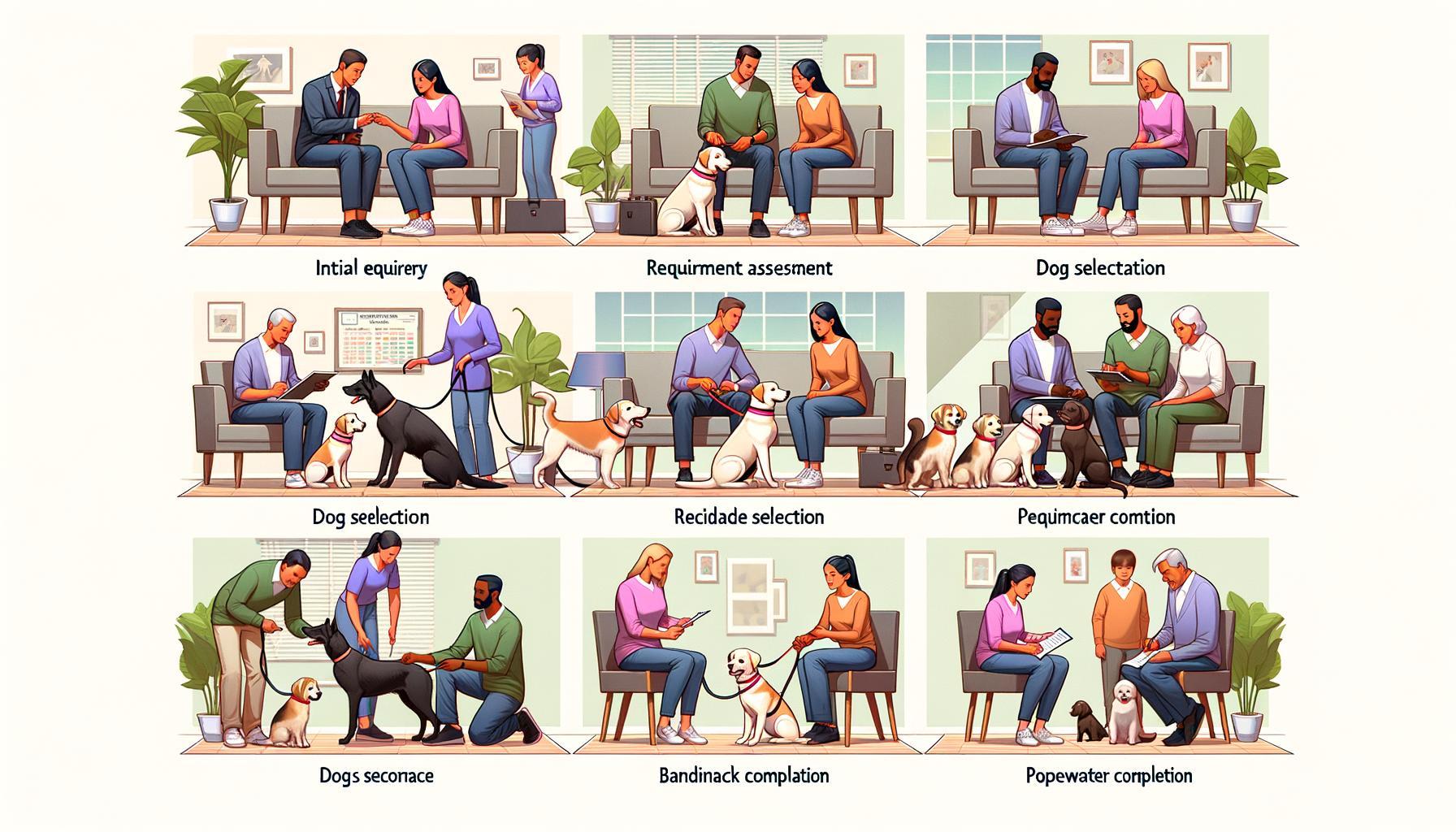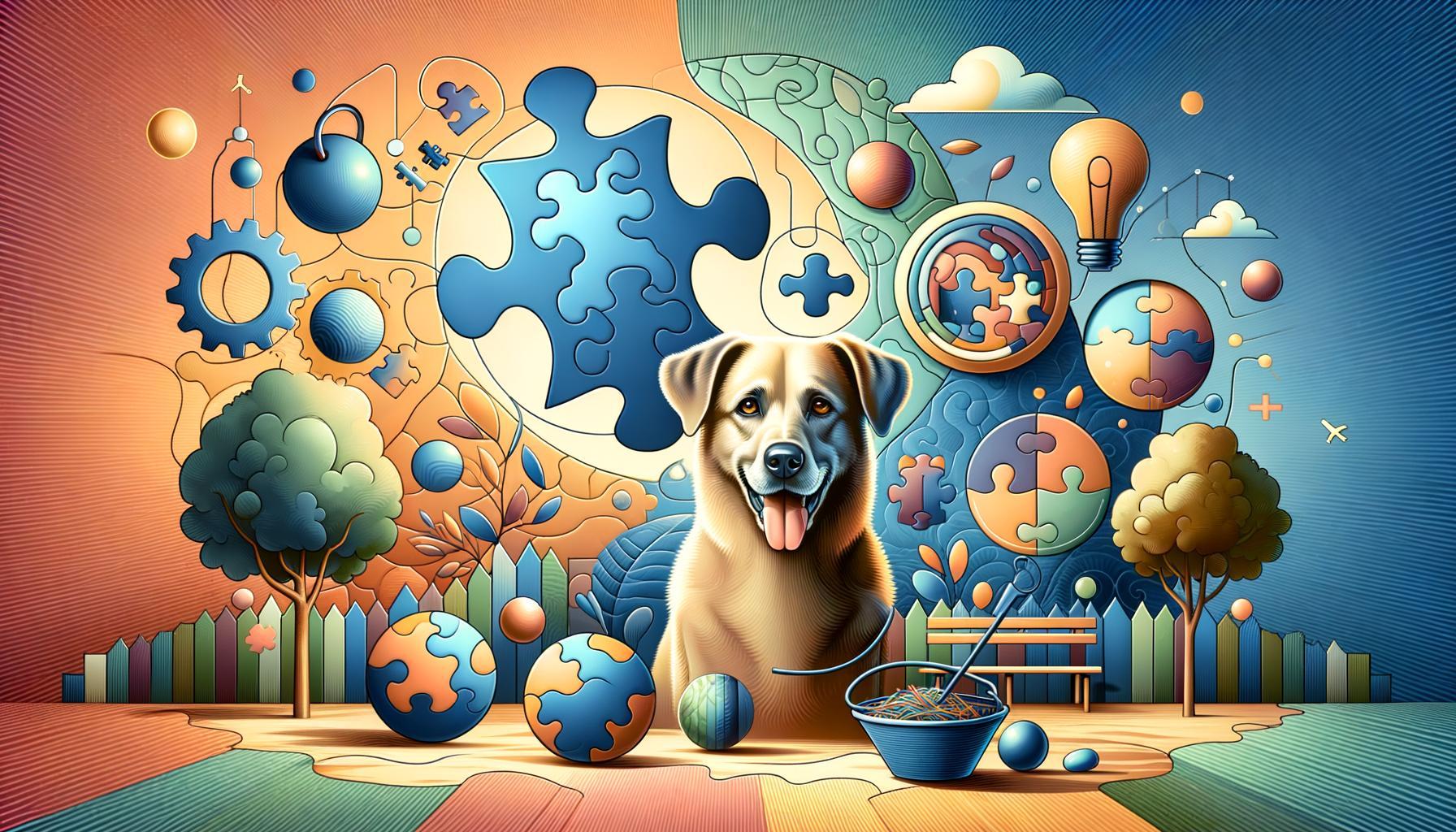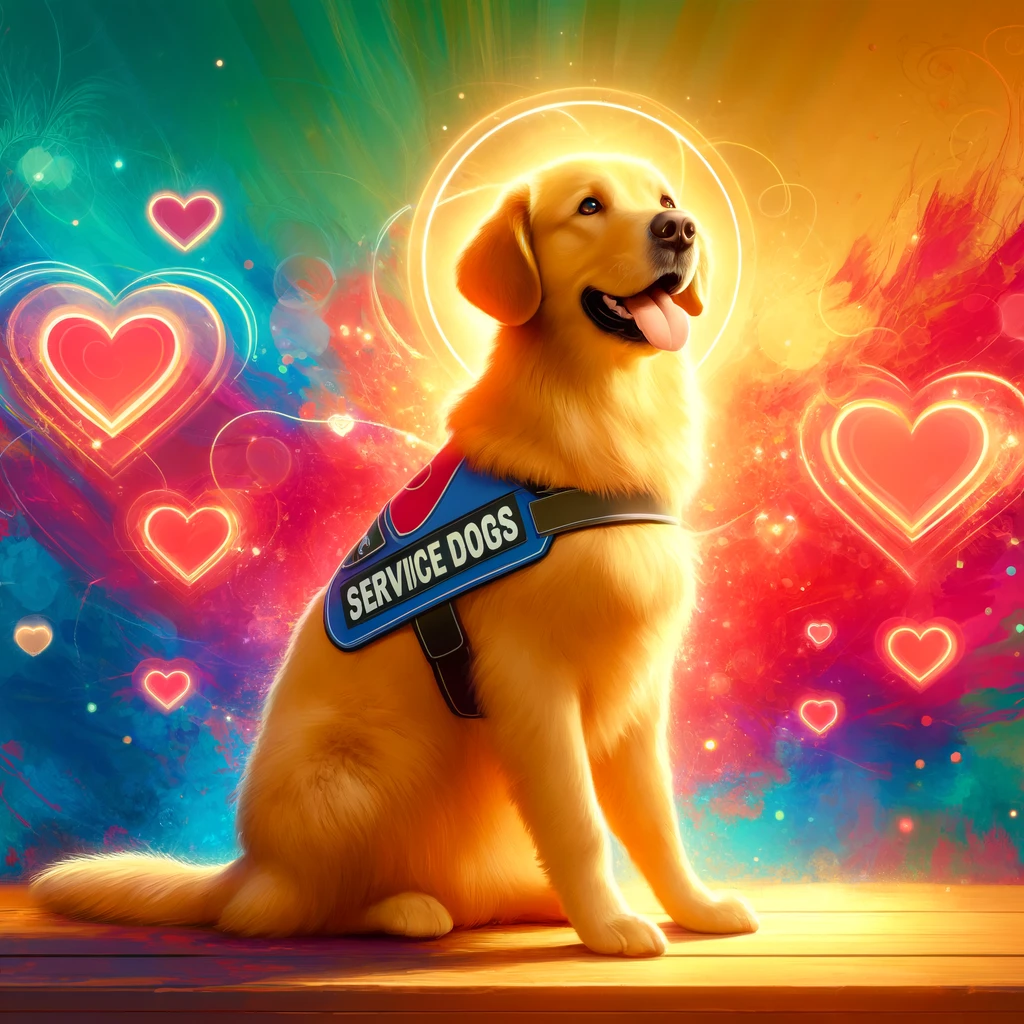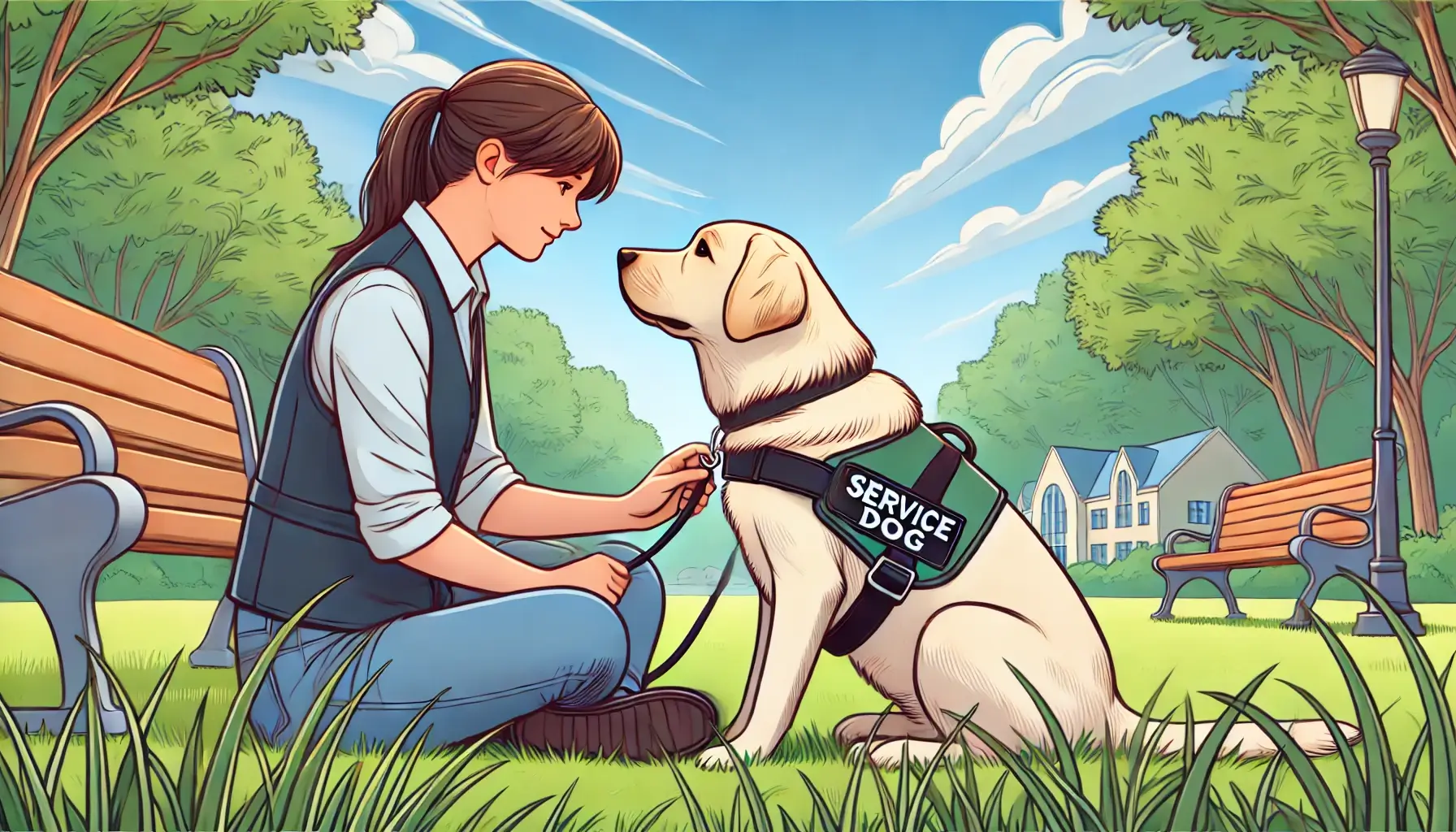How to Adopt a Therapy Dog: A Step-by-Step Guide
Ever watched a therapy dog in action and thought, “Wow, I need that kind of fuzzy warmth in my life”? Well, you’re not alone. Therapy dogs are like four-legged superheroes sans capes, spreading joy, offering comfort, and sometimes, just being there, letting you know everything’s going to be alright. Adopting one, though, can feel like navigating a maze blindfolded… on one leg. Fear not! We’re here to turn that maze into a walk in the park with our step-by-step guide on how to adopt a therapy dog.
This journey isn’t your average pet adoption. It’s more like matchmaking; finding that perfect furry soulmate who not only loves you for your Netflix binge-watching skills but is also a pro at soothing worries and bringing smiles. Ready to start this adventure? Let’s dive in with gusto and get you on your way to finding your paw-fect therapy dog companion.
Table of Contents
- 1. Starting the Journey: What You Need to Know Before Adopting
- 2. Finding Your Furry Therapist: Where to Look for a Therapy Dog
- 3. The Matchmaking Process: Selecting the Perfect Canine Companion
- 4. Preparing Your Home: A Safe Haven for Your New Friend
- 5. The Adoption Finale: Bringing Your Therapy Dog Home
- 6. Bonding and Training: Creating an Unbreakable Connection
- The Conclusion
1. Starting the Journey: What You Need to Know Before Adopting
Dipping your toes into the therapy dog adoption pool? Splendid choice! Therapy dogs are not just pets; they’re furry bundles of joy, bringing unparalleled warmth and comfort to countless souls. But before you bring home that ball of fluff, there’s a bit to mull over. It’s not just about picking the cutest pup from a lineup; it’s about finding a heart that beats in tune with yours and lives that align in purpose and passion.
First things first, consider your lifestyle. Are you a marathon runner or a Netflix marathoner? Do you have a sprawling yard or a cozy apartment? Different breeds and personalities will fit better with different lifestyles. It’s like picking a dance partner; rhythm matters. Below, find a quick checklist to ensure you’re on the right track:
- Space: Got room to roam or cozy quarters? Size matters.
- Activity Level: More of a couch potato or an adventure seeker? Match your energy.
- Time: Dogs need your time. Lots of it. Can you commit?
- Allergies: Sniffles and sneezes can be a deal-breaker. Check your sensitivities.
- Purpose: Need emotional support, a social butterfly, or a marathon buddy? Purpose aligns the partnership.
Once your checklist is in order, it’s time to dive into the specifics of therapy dogs. Not every furry friend can don the therapy dog vest. It takes a special blend of temperament, training, and tenderness. Look for breeds known for their calm demeanor, robust health, and empathetic nature. Think Golden Retrievers, Labradors, and Poodles, but remember, breed is not everything. Individual personality is key. Keep your heart open; sometimes, the perfect therapy dog might not be the breed you expected.
2. Finding Your Furry Therapist: Where to Look for a Therapy Dog
Diving into the adorable world of therapy dogs isn’t just heartwarming; it’s a game-changer for mental and emotional health. But where do you even start looking? Think of it as a treasure hunt – your future furry therapist could be anywhere, but certain spots are hotspots for finding these compassionate canines. Let’s break it down, shall we?
- Local Animal Shelters: These are gold mines for hidden gems. Shelters are packed with dogs yearning for a second chance at life. Many of these pups have the gentle, loving nature perfect for therapy work. Don’t forget: adopting from a shelter not only gives you a therapy buddy but also saves a life.
- Rescue Groups: Specific breeds or those with the ideal temperament for therapy work often end up in breed-specific rescue groups. Got a soft spot for Goldens or Labs? This is your go-to spot.
- Reputable Breeders: If you’re looking for a puppy to train as a therapy dog from scratch, a reputable breeder is a way to go. They can provide health clearances and insight into the temperament of the pup’s parents, essential factors for therapy dogs.
Not all treasures are buried; some are just waiting to be discovered at various spots. Here’s a snapshot:
| Location | Pros | Cons |
|---|---|---|
| Local Animal Shelters | Save a life, cost-effective, diverse selection | Backgrounds often unknown, may require additional training |
| Rescue Groups | Specific breeds, often with known history | Can be more expensive, may have a waitlist |
| Reputable Breeders | Puppies with known health and temperament | More expensive, requires thorough research to avoid unethical breeders |
Ready to embark on your search? Keep your heart open and eyes peeled. Your furry therapist might just be a shelter visit or a phone call away. Remember, it’s all about the connection. When you know, you’ll know.
3. The Matchmaking Process: Selecting the Perfect Canine Companion
Finding the right furry friend is like looking for a soulmate in the canine world. You’re not just picking a pet; you’re choosing a partner in crime, a confidante, and a friend who’ll be by your side through thick and thin. It’s crucial that the chemistry between you two is just right. So, where do you start? Begin by understanding your own lifestyle and emotional needs. Are you a couch potato or a marathon runner? Do you need a dog that’ll be a rock during anxiety attacks or one that’ll make you laugh with their goofy antics?
Before you dive heart-first into the sea of wagging tails and puppy eyes, take a moment to consider what you need in a therapy dog. Think about size, energy level, and breed temperament. Some breeds are natural empaths, like Labrador Retrievers and Golden Retrievers, while others, such as Poodles, are smarty-pants, easily trained for various therapy tasks. Here’s a quick view:
- Size Matters: Big enough to hug but small enough to fit in your living space comfortably.
- Energy Level: Match your activity level. Don’t mix a high-energy dog with a laid-back lifestyle.
- Temperament: Look for breeds known for their empathy and ability to train.
And now, the fun begins! Visit shelters, rescue organizations, and reputable breeders. Spend time with potential pups to gauge that all-important connection. It’s like speed dating but way cuter. Ready to meet your match? Keep these factors in mind, and let the journey begin. Remember, it’s all about finding that perfect paw to fit your glove!
4. Preparing Your Home: A Safe Haven for Your New Friend
Absolutely! Let’s turn your home into a zen palace for your fluffy therapist. It’s not just about cozy beds and chew toys. Oh no, it’s about crafting an environment where your therapy dog can thrive, offering comfort without stumbling over the modern-day clutter of our lives.
Firstly, make your home a No-Worry Zone. Start by dog-proofing like a pro. This means securing cables out of reach, ensuring no tiny objects lurk on the floor waiting to be swallowed, and chemicals are safely tucked away. Your dog doesn’t need a chemistry lesson! Think of your place as a playground that needs to be both fun and safe.
- Create Quiet Corners: Identify a couple of spots in your home where your dog can retreat to for some quiet time. Maybe a cozy corner with a soft bed and their favorite toy.
- Safety First: Install baby gates if needed to keep your furry friend from venturing into areas that could be hazardous.
The magic happens when you think beyond the basics. Lighting plays a huge role in setting the mood. Soft, warm lighting can make a night and day difference, calming both you and your therapy dog.
| Area | Safety Checks | Cozy Upgrades |
|---|---|---|
| Living Room | Secure loose wires, remove small chewable items | Soft blankets, dog bed |
| Kitchen | Lock cabinets, secure trash can | Water bowl in easy-to-reach spot |
| Bedroom | Keep medications out of reach, secure window screens | Another dog bed, cozy nooks |
Remember, a happy dog equals a happy life. Your effort to create a safe and loving environment pays off in endless wagging tails and cuddles. Your home doesn’t just stay a house; it transforms into a haven of healing and happiness for both of you.
5. The Adoption Finale: Bringing Your Therapy Dog Home
Ah, the grand finale! It’s not just a casual stroll through the pet store; it’s more like meeting a legend. The day you bring your therapy dog home is a day of joy, jitters, and jubilations. First thing’s first, roll out the red carpet, because your hero is coming home. This isn’t just any dog; it’s a soon-to-be certified cuddler, a master of mirth, a therapy wizard on four legs. Your preparation will make a world of difference. So, deck the halls and prepare for paws!
Let’s break it down to make sure your homecoming is smoother than your dog’s coat.
-
Prep the palace: Your dog’s new realm needs to be ready. Think comfort, safety, and a sprinkle of love. A cozy bed, water and food dishes, and some engaging toys should be part of the royal inventory.
-
Family meet and greet: Introductions are crucial. If there are other pets, make introductions slow and controlled. Humans in the household? Make sure they know how to interact with your new four-legged therapist without overwhelming them.
And oh, remember the essentials with a quick peek at this handy table:
| Item | Why You Need It |
|---|---|
| ID Tag with Your Contact Info | Because adventures are bound to happen, and you want your buddy back home safely. |
| Health Records & Insurance | Health is wealth, especially in the therapy dog biz. |
| Leash and Collar | For those stylish yet secure strolls. |
| Comfy Dog Bed | Because after a hard day’s work, even heroes need their rest. |
Finally, breathe. This is the start of an incredible journey. Your therapy dog may not wear a cape, but they’re going to swoop into your heart and fill it with joy. Here’s to the magical, tail-wagging adventures that lie ahead! 🐾
6. Bonding and Training: Creating an Unbreakable Connection
Sure, let’s dive straight into the heart of connection – crafting that unbreakable bond between you and your soon-to-be therapy dog. Remember, it’s all about mutual trust, respect, and a whole lot of treats (just kidding, well, sort of!).
First things first, training isn’t just about teaching your dog to sit, stay, or roll over on command—it’s about communication. It’s how you and your four-legged friend start speaking the same language. You’ll want to start with the basics and gradually introduce more complex tasks, always using positive reinforcement. Think treats, belly rubs, and enthusiastic praises—they go a long way. And remember, consistency is key. Dogs, much like humans, thrive on routine and clear expectations.
But it’s not all work and no play. Here’s where the bonding comes into play. Spend quality time together outside of training:
- Go for walks in different environments to stimulate their senses
- Play fetch or tug-of-war to burn off some energy
- Quiet time together can be as simple as sitting with them, petting them while you read or watch TV
This blend of structured training and unstructured play not only builds a bond but also establishes a deep connection. It’s like building a friendship; the more positive experiences you share, the stronger your bond will be.
Schedule Overview
To give you a clearer picture, let’s lay out a simple schedule:
| Time | Activity |
|---|---|
| Morning | Quick training session + Walk |
| Afternoon | Playtime |
| Evening | Relaxation time + Review of the day |
Think of this as a balanced diet, but instead of food, it’s a mix of discipline, play, and rest. The ultimate trio for a happy, healthy therapy dog in making.
The Conclusion
And there you have it, folks — your very own compass to navigating the adventure of adopting a therapy dog. It’s more than just a journey; it’s about finding that furry soulmate who’s going to be by your side, offering comfort and support, each step of the way. As you embark on this exciting quest, remember that patience is your best pal and perseverance, your trusted guide.
Before We Part Paws:
- Listen to your heart, but let reason hold the leash. Choosing a therapy dog is a heart thing, for sure. But stay wise — health, temperament, and breed characteristics matter.
- Preparation is key. Your home is their home. Make it welcoming. Make it safe.
- It’s a journey for two. Training is where the magic happens. It’s where the bond is forged.
Final Thoughts:
Adopting a therapy dog isn’t just about bringing a pet home. It’s about welcoming a new member into your family, one who’s geared up with a fur coat and a heart ready to offer endless love and support. As you both venture into this new chapter, remember: every nuzzle, every paw in your hand, and every gaze that seems to understand just what you’re feeling without a word spoken is your reminder. You didn’t just adopt a therapy dog. You found a friend, a confidant, and a beacon of light for those days when you need it the most.
So, to all the trailblazers about to embark on this remarkable journey, we salute you. Here’s to finding that one-in-a-million pal who’ll not only change your life but enrich it in ways you’ve yet to imagine.
Happy Adopting! 🐾







Leave a Reply